Top 5 Use Cases for REST API in Modern Web Development

In modern web development, REST APIs (Representational State Transfer Application Programming Interfaces) play a crucial role in how applications communicate and share data. REST APIs allow web services to interact seamlessly, providing the flexibility and scalability needed to build rich, interactive user experiences. This article is intended for developers of all skill levels—whether you’re just starting out or have experience with REST APIs. We will explore the top five use cases for REST APIs, providing examples, technical explanations, and practical scenarios to help you understand their importance in building robust applications.
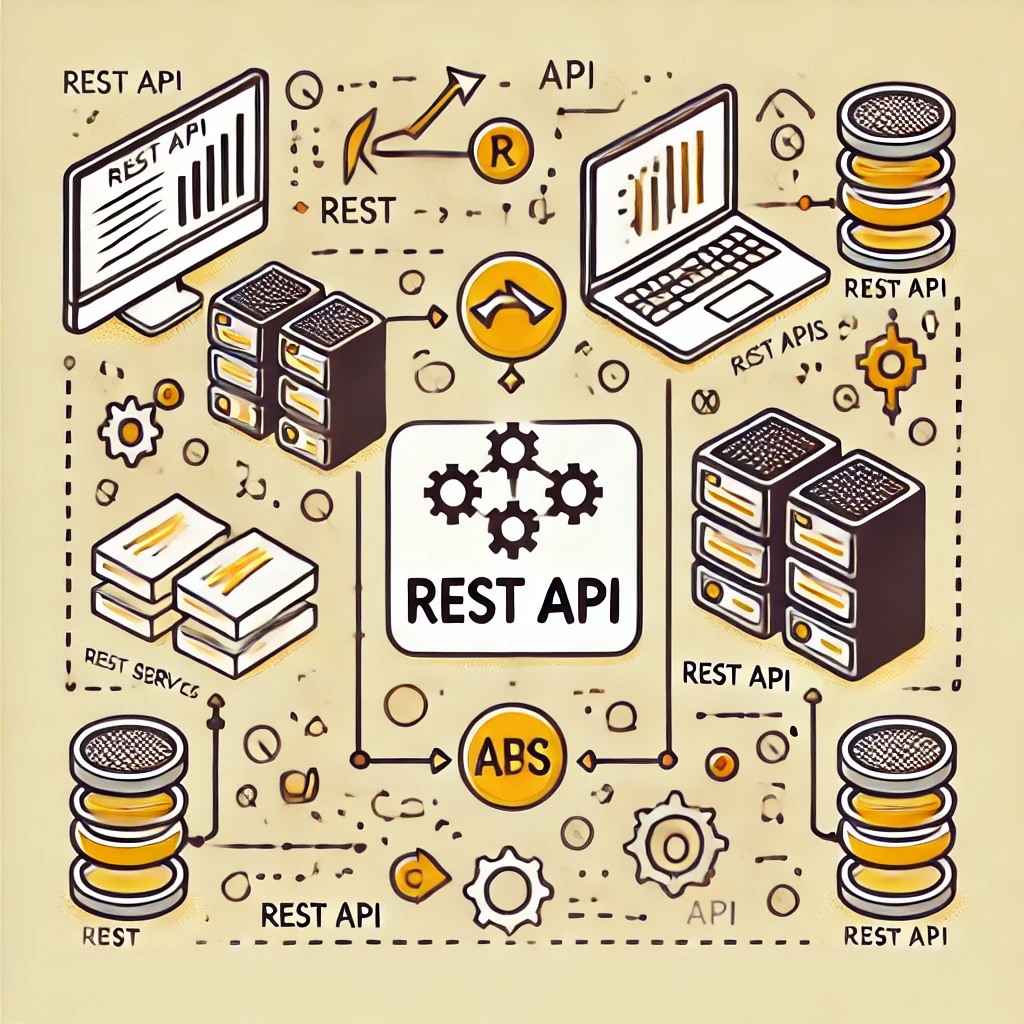
1. Data Retrieval and Integration
One of the most common use cases for REST APIs is data retrieval and integration. REST APIs provide a standardized way for applications to request and receive data from a server. For example, a web application might use a REST API to fetch data from a database and display it to users in real time, which is especially useful for news websites, social media platforms, and weather apps.
To illustrate, consider a weather app that uses a REST API to retrieve weather data from a server. Here is a simple example of how a GET request might look:
import requests
response = requests.get('https://api.weather.com/v3/weather/conditions?city=London')
if response.status_code == 200:
weather_data = response.json()
print(weather_data)
else:
print("Error fetching data")Explanation: In this example, the requests library sends an HTTP GET request to the weather API. The JSON data is parsed and printed if the response status code is 200 (indicating success). Otherwise, an error message is displayed.
REST APIs make integrating data from multiple sources into a single application straightforward, allowing developers to create a unified user experience. For example, a travel booking website can use multiple APIs to pull data from airlines, hotels, and car rental services, presenting users with all available options in one place.
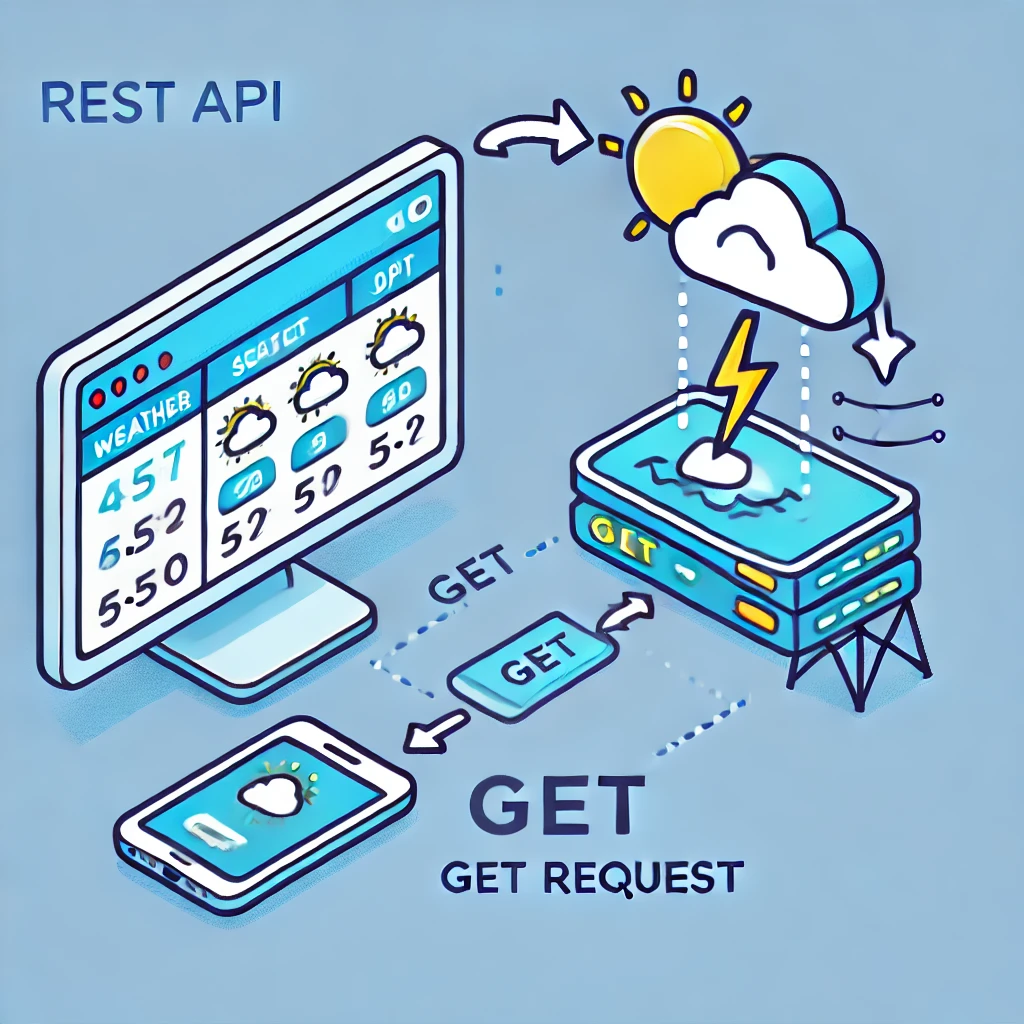
2. User Authentication and Authorization
REST APIs are widely used for user authentication and authorization. Many web applications require users to log in using traditional credentials or third-party services like Google, Facebook, or GitHub. REST APIs facilitate the implementation of authentication systems such as OAuth 2.0, enabling secure user authentication.
For example, OAuth 2.0 allows users to log in to your web application using their Google credentials without having to create a new account. Here’s a high-level overview of how OAuth 2.0 works:
- The user clicks the “Log in with Google” button.
- The application sends a request to Google’s authorization server.
- If the user grants permission, Google sends an authorization code to the application.
- The application exchanges the code for an access token, which can then be used to access user information.
Detailed Scenario: Suppose you want to allow users to log in using their Google accounts. You would need to register your application with Google, obtain client credentials, and handle the OAuth flow to obtain an access token securely. This access token is then used to authenticate the user on subsequent requests.
Authorization is another critical aspect of modern web applications. REST APIs manage access permissions, ensuring that only authorized users can access specific parts of an application. For instance, an online store might use a REST API to verify if a user has administrative privileges before allowing modifications to product listings.

3. CRUD Operations
Create, Read, Update, and Delete (CRUD) operations are fundamental to most web applications, and REST APIs provide a standardized way to perform these operations on a server. CRUD functionality is crucial for applications with user-generated content, such as blogs, forums, and e-commerce sites.
For example, a blog platform might use a REST API to allow users to create new posts, update content, delete posts, or retrieve articles for the homepage. Here is an example of a CRUD operation using REST:
import requests
# Create a new blog post
new_post = {
"title": "My First Blog Post",
"content": "This is the content of my first blog post."
}
response = requests.post('https://api.blogplatform.com/posts', json=new_post)
if response.status_code == 201:
print("Post created successfully!")
else:
print("Error creating post")Explanation: In this example, an HTTP POST request creates a new blog post. The post data is passed in JSON format, and the API responds with a status code indicating whether the operation was successful.
By following RESTful principles, developers can make CRUD operations intuitive and easy to use, with each HTTP verb (POST, GET, PUT, DELETE) representing a specific action.
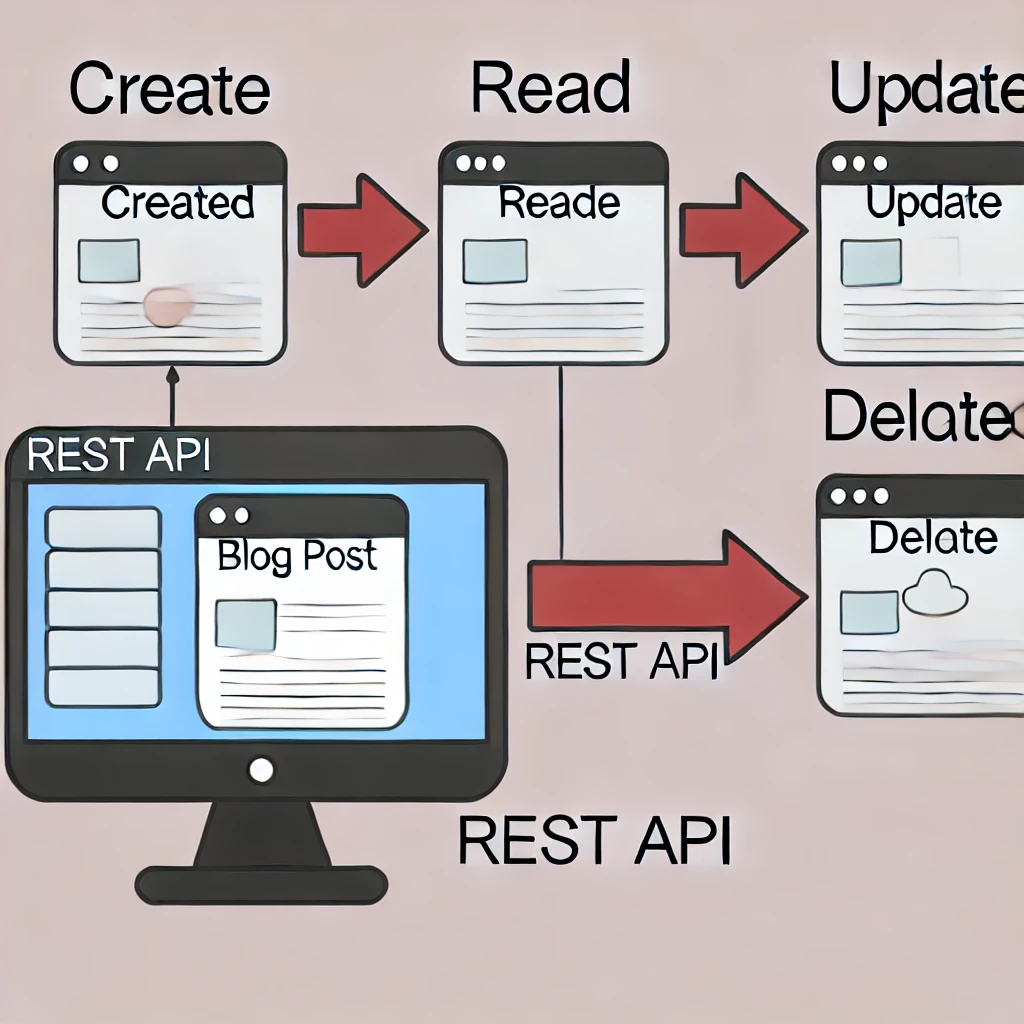
4. Third-Party Service Integration
REST APIs are often used to integrate third-party services into web applications. Modern web development frequently relies on multiple external services to enhance the user experience. Examples include payment gateways (like Stripe or PayPal), social media sharing, mapping services (like Google Maps), and analytics platforms.
For instance, a food delivery app might use a REST API to integrate Google Maps for real-time location tracking or to show delivery routes, making the app more user-friendly. Here is a simplified example of using a third-party API to retrieve map data:
import requests
response = requests.get('https://maps.googleapis.com/maps/api/directions/json?origin=NYC&destination=Boston&key=YOUR_API_KEY')
if response.status_code == 200:
map_data = response.json()
print(map_data)
else:
print("Error fetching map data")Explanation: The requests library sends a GET request to Google Maps’ API, providing the origin, destination, and API key. The response includes the route information, which can be used to display directions or calculate travel times.

5. Microservices Architecture
Microservices architecture is a popular approach to building scalable and maintainable web applications, with REST APIs being a key component of this architecture. In a microservices-based system, an application is divided into smaller, independent services that communicate with each other via REST APIs.
Each microservice is responsible for specific functionality, such as user management, payments, or notifications. REST APIs enable efficient interaction between these services, making it easier to independently develop, scale, and maintain different application parts.
For example, an e-commerce platform might use one microservice for product catalogues, another for processing orders, and another for managing customer accounts, all communicating through REST APIs. The diagram below illustrates how microservices interact via REST APIs:
Detailed Explanation: Each microservice is isolated, which means it can be developed, deployed, and scaled independently. REST APIs provide the communication layer that allows these services to work together seamlessly, ensuring that the entire application functions as a cohesive unit.
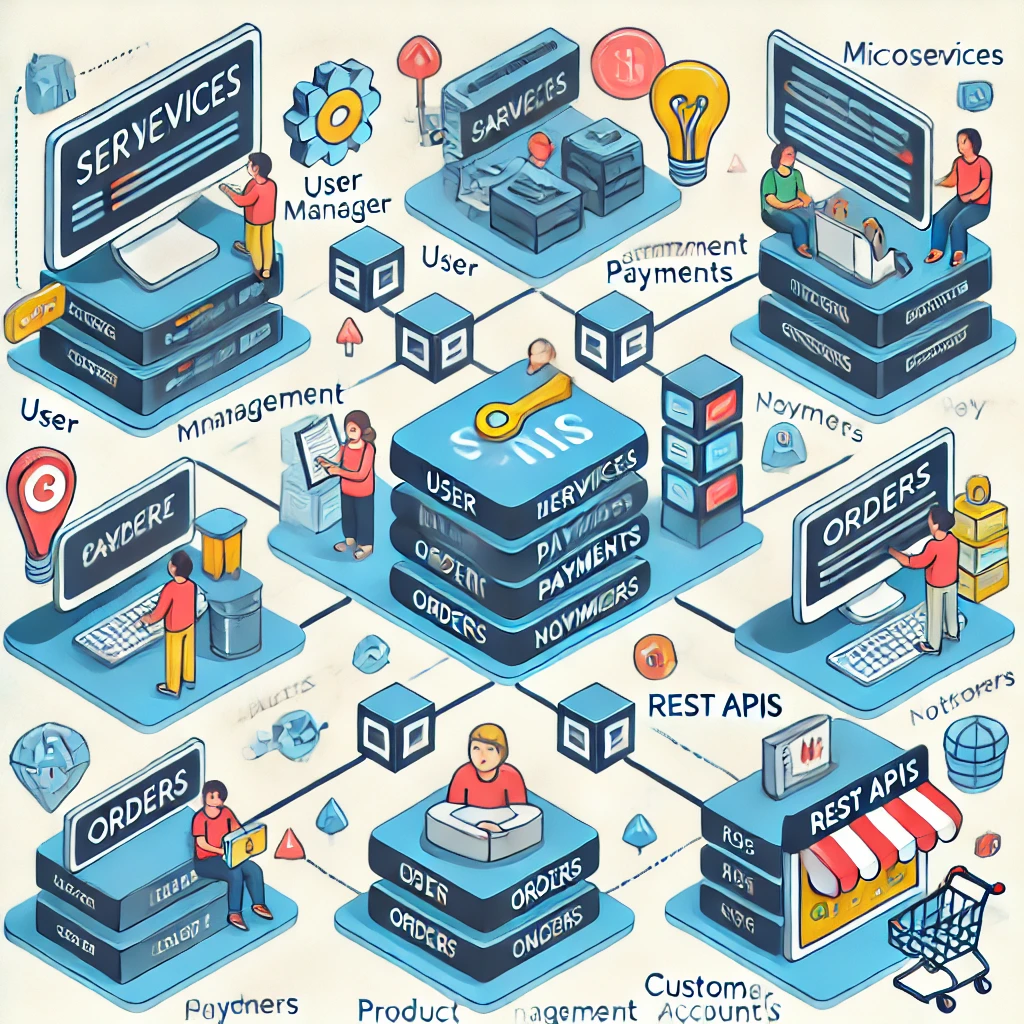
Benefits and Challenges
While REST APIs provide numerous benefits, such as scalability, flexibility, and ease of integration, they also come with challenges. Here are some common challenges and ways to address them:
- Security Concerns: REST APIs can be vulnerable to attacks, such as man-in-the-middle attacks, if not properly secured. Solution: Use HTTPS to encrypt data transmission, implement proper authentication (e.g., OAuth 2.0), and validate input to prevent injection attacks.
- Rate Limits: Many third-party APIs enforce rate limits, restricting the number of requests a client can make within a specific time frame. Solution: Implement caching to reduce the number of API calls, and design your application to handle rate limit errors gracefully by retrying after a delay.
- Data Consistency: Data consistency can be difficult when multiple services communicate via REST APIs, especially in distributed systems. Solution: Use eventual consistency models, implement retries for failed requests, and ensure proper logging to monitor data synchronization issues.
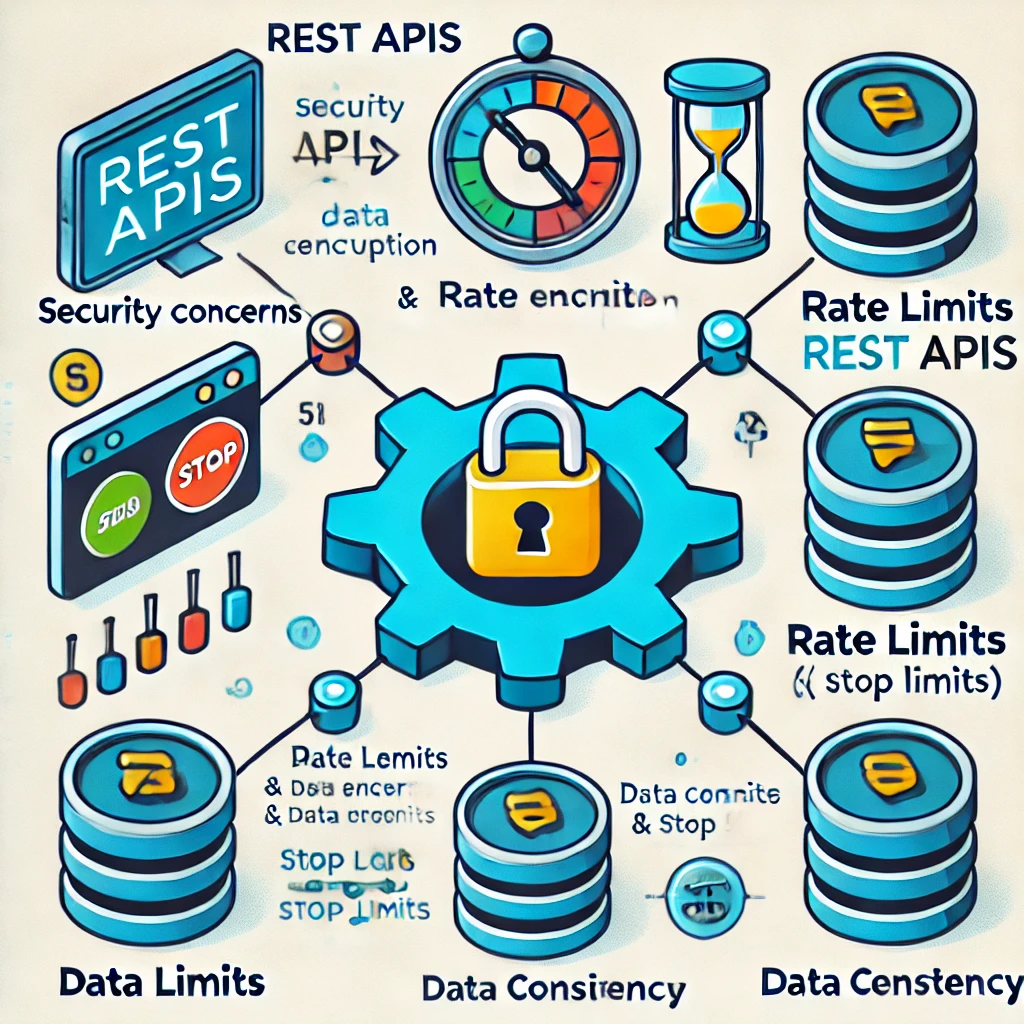
Conclusion
REST APIs have become an indispensable part of modern web development, enabling seamless communication between services and providing developers with the tools to build scalable, secure, and feature-rich applications. Whether integrating data from multiple sources, managing user authentication, performing CRUD operations, connecting to third-party services, or implementing a microservices architecture, REST APIs provide the flexibility and reliability needed to create modern web experiences.
To leverage REST APIs effectively, try integrating a simple third-party API into your next project or exploring building a microservices-based application. Many resources, such as online courses, documentation, and community forums, are available to help you deepen your understanding of REST APIs and take your projects to the next level.l.



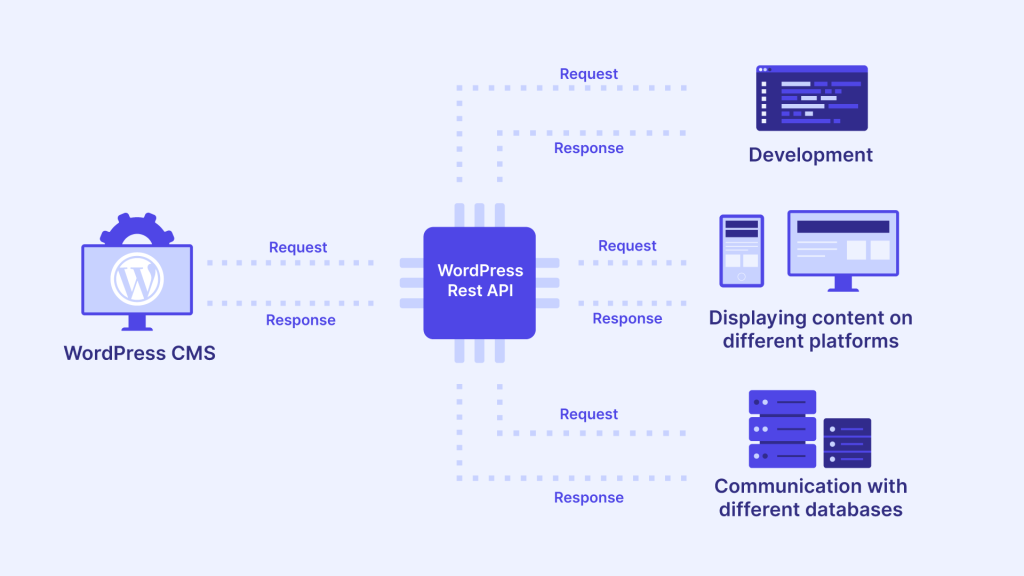



Responses